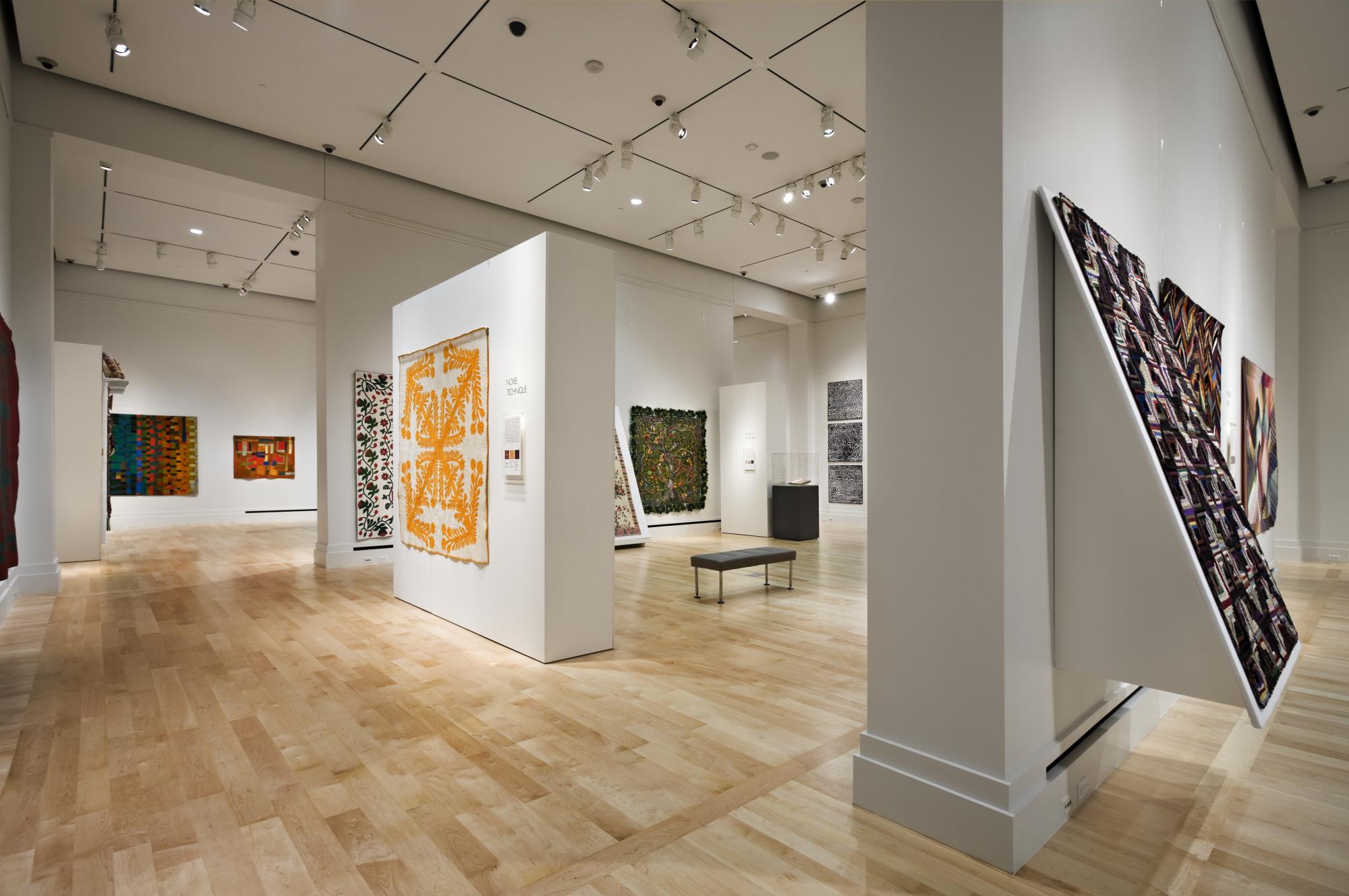
Quilts in Common
March 30-Aug. 17, 2008
Around the Globe & Across Centuries

Quilts in Common was one of two inaugural exhibitions in the new galleries of the International Quilt Museum. This exhibit curated by Carolyn Ducey, curator of collections, and Marin F. Hanson, curator of exhibitions, not only showcased many of the Center's masterpiece quilts, but was organized in a novel and thought provoking way: unique commonalities bring together quilts from around the world and across the centuries rather than isolating them in geographical or historical groupings.
This organizing construct emphasizes the connections of American quiltmaking traditions to others across the globe; it also ties quiltmaking traditions to other forms of visual art across time and space.
While the quilts must be viewed in person to fully appreciate the vibrant patterns and highly detailed craftsmanship, the images below provide a preview